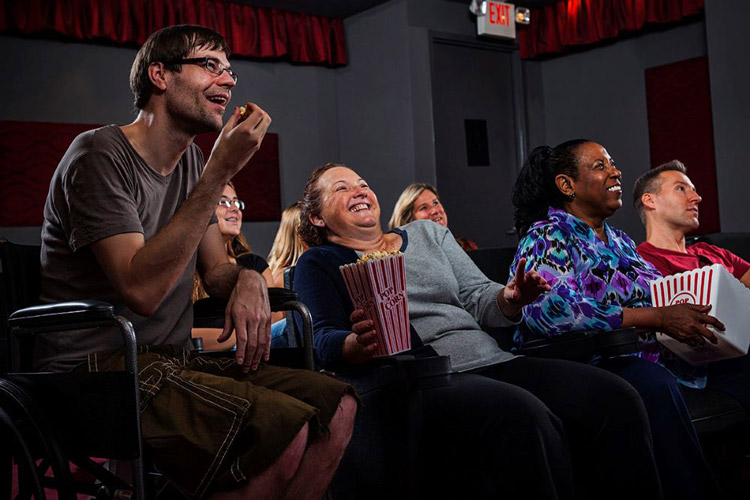According to the United Nations Department of Economic and Social Affairs, “The rich diversity of our society inclusive of all its members – including persons with disabilities – can help strengthen fundamental human rights and contribute to development for all.”
Why then is inclusion still so elusive for many with intellectual and developmental disabilities (I/DD)? Dare we blame it on media? Disabled people make up nearly 20 percent of the American population yet represent only 2 percent of television characters. Even worse, 95 percent of these roles are played by actors who are not disabled.
Representation is the way in which media portrays people and their experiences, communities, ideas, and groups. However, rather than reflecting reality, media often promotes stereotypes and creates an alternative reality. People with I/DD are represented as simplistic, inspirational, or dependent rather than as individuals with hopes, dreams and their own unique personalities.
It’s just entertainment, right?
Media is books, movies, television, news, streaming, music and more. It’s entertainment, but with the power to shape our perception in two significant ways:
- For many, media is how we learn about people who are different than those we’re familiar with. If media portrays inaccurate stereotypes, people come to believe those stereotypes.
- Media is also one of the ways we learn about ourselves. Seeing ourselves in media validates who we are. It connects us to our larger community and shows us that we all have a place in the world. How’s that for inclusion?
What can we do?
There’s awareness around the issue and we’ve seen some progress in the realm of big media. However, there’s more work to be done as we continue to see misguided portrayals. Most recently, the movie “Music” has come under fire for its stereotypical representation of the title character, a young girl with Autism. We can raise our voices, share our concerns and shake our fists, as Charlie Hancock, a young journalist with Autism, has done in her essay, “Autism on Screen: Where Sia Went Wrong.” We applaud you Charlie.
We can also share media with our loved ones that represents the diversity of our world. A well curated media selection that accurately and fairly portrays people with disabilities addresses the two primary ways media shapes our perception. It helps us learn more about people who are different from us and we have the opportunity to see ourselves within the characters and personalities portrayed.
As we celebrate Developmental Disabilities Awareness Month and in the interest of promoting inclusion starting at an early age, we would like to share a collection of Children’s Books That Feature Characters With Disabilities put together by Huffpost.com.
Subscribe to our blog and stay tuned for additional curated media content. We’ll focus next on movies and television series featuring characters with disabilities and, as we’re beginning to see more often, characters with disabilities portrayed by actors with disabilities.

